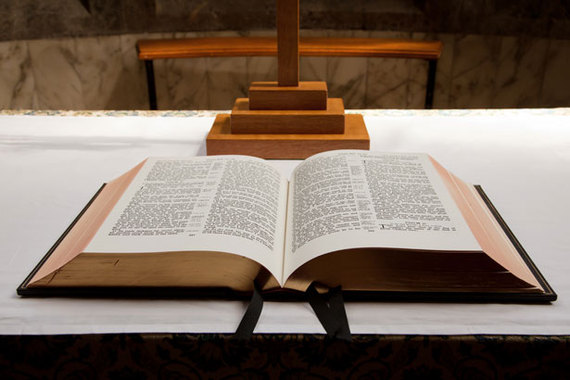In the early 2000s, I was working hard to keep lesbian and gay persons out of the ministry of my denomination, the Presbyterian Church (USA). I did this in part because I thought the biblical case against gay relationships was straightforward. The standard arguments cited eight fragmentary quotes scattered throughout the Bible. I thought that was enough to settle the matter.
I was wrong. As I recount in my recent book, my settled convictions were shaken when I started to see how the results of those traditional condemnations produced blatant contradictions with the Bible's teaching about the fruits of righteousness and the nature of God. These contradictions convinced me that something about the exclusionary teaching didn't add up. What I couldn't understand was how this traditional teaching could be mistaken when it was grounded in quotes from the Bible.
I found help with this puzzle in the teaching of a second-century church leader, named Irenaeus of Lyons. Irenaeus in his day was struggling to keep his flock from being led astray by false teachers who were proclaiming their own fabricated versions of "Christianity." These counterfeit faiths bore little resemblance to anything that Jesus and his disciples had taught, but in spite of that the false teachers were still able to back up most of what they said with Scripture quotes. This was very confusing to Irenaeus' flock, and I discovered that these second-century Christians were asking the same question I was: How could a teaching be mistaken or unfaithful when its proponents could back it up with quotes from the Bible?
Irenaeus explains how this can happen. Imagine, he says, that a skilled artist has created a mosaic picture made out of colored stones. All these multicolored fragments together form a beautiful portrait of a king. But now suppose that another artist comes along and disassembles the original mosaic, sorting all the stones into little colored piles. This second artist re-assembles the stones into a new mosaic, and he travels around showing off the picture, saying "Behold the King." Only this time, in place of the original portrait, the new arrangement of stones forms a crudely-drawn picture of a dog. Every single stone in that new mosaic comes from the original portrait. But that does not make it a true picture of the King!
This, says Irenaeus, is what the false teachers have done with Scripture. Like the individual stones making up a mosaic, they have taken individual quotes from all over the Bible. But the quotes have been pulled out of their original contexts and rearranged in such a way that they no longer form a true picture of the Bible's message. Individual scripture quotes can lose their connection to the "true portrait" of God's love in Christ that is the Bible's overarching focus.
I myself had learned to support the categorical condemnation of same-sex relationships by appealing to scattered fragments of Scripture. But Irenaeus helped me understand that being able to cite Bible passages in support of a particular teaching is no guarantee that the teaching is either true or faithful. Where does that leave us?
Fortunately, the church across the centuries has developed guidelines for interpreting Scripture that help keep our use of particular passages in touch with the true portrait of God's love in Christ. When we apply these guidelines, the Bible's teaching about gay people and their relationships appears in a whole new light. In my book I show how the application of these time-tested principles of biblical interpretation produces an overwhelmingly positive biblical case in favor of gay marriage. I came to realize how my former reliance on fragmentary, out-of-context quotes from Scripture had led me to lose touch with the "big picture" of God's love that lies at the heart of the Bible's witness.
This is not the first time well-meaning Christians have made such a mistake. Some of my devout Presbyterian ancestors used fragmentary quotations from Scripture to defend their traditional beliefs supporting slavery and the subjugation of women. In those cases the church eventually came to embrace a more faithful interpretation of the Bible that did a better job of remaining in touch with the "true portrait" of God's love for all people in Christ.
I believe the same dynamic is at work today overturning the church's traditional condemnation of gay people and their relationships. This change is taking place in my own Presbyterian Church (USA), which this summer voted to allow its pastors to officiate at same-sex weddings. I pray the progress will continue!
More information about Mark Achtemeier and his book can be found here.

